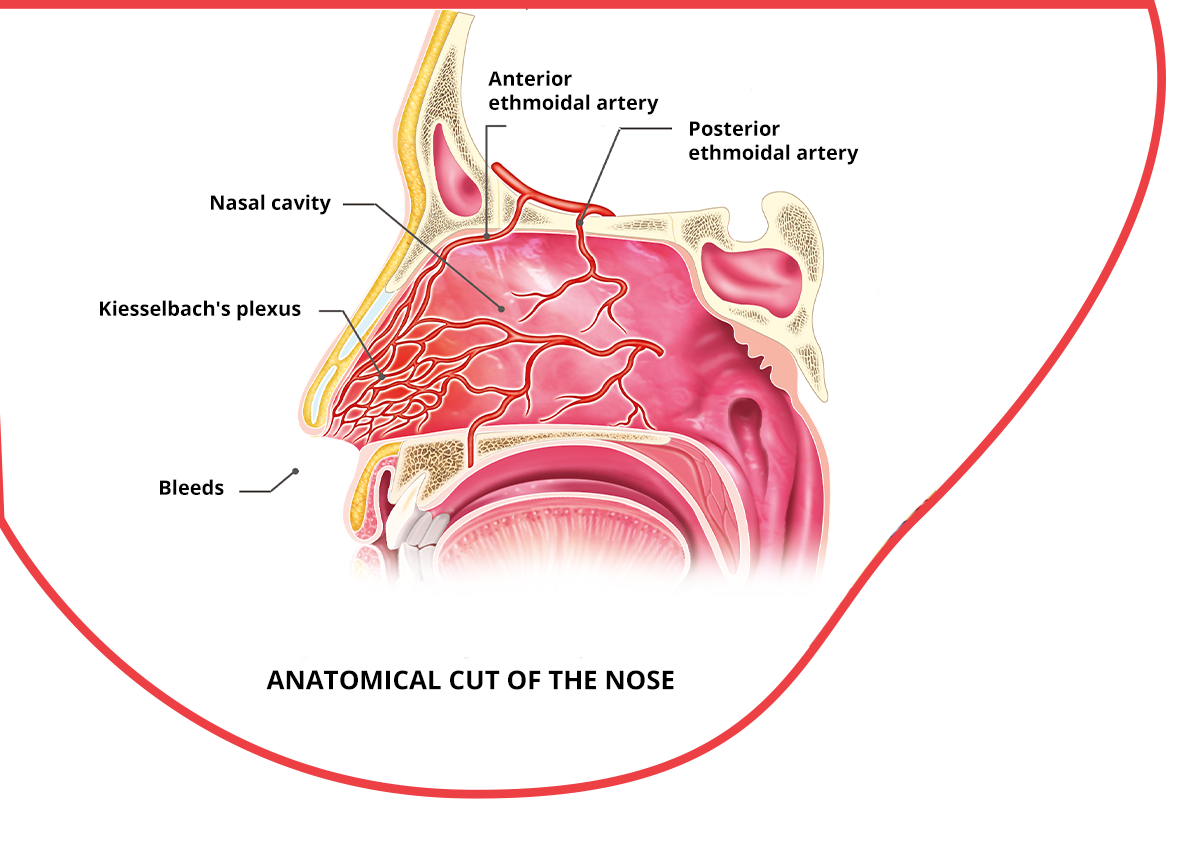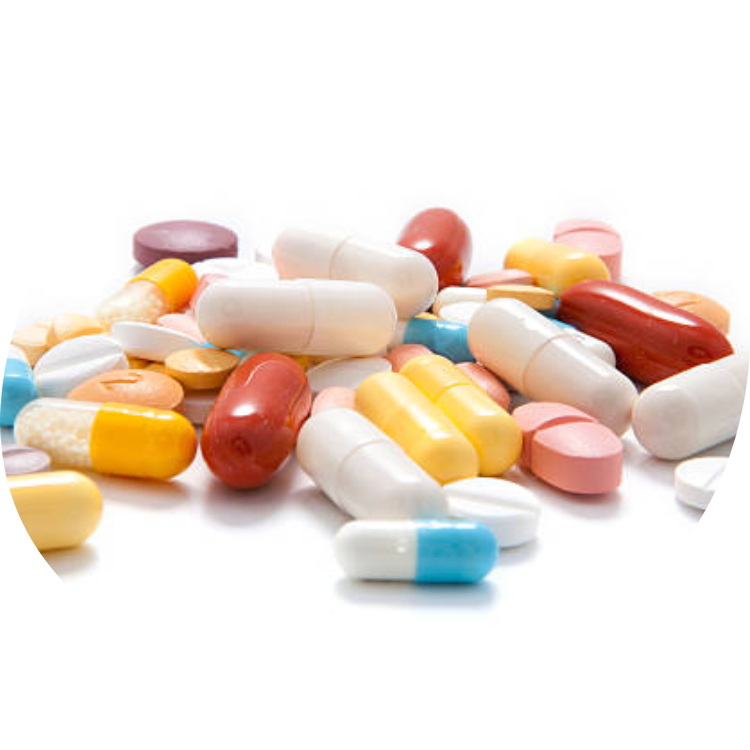Nosebleeds
A nosebleed (also known as epistaxis) is a bleed originating from the nasal fossaeNasal cavities. It is a common phenomenon which affects 60 % of the population at least once in their lifetime.


Why do we bleed so easily from the nose?
The nasal mucosa contains many blood vessels, particularly in the Kiesselbach’s plexusHighly vascularised area located on the anterior part of the nose area located on either side of the nasal septum, approximately 1 cm from the nose entrance. This vascularisation is necessary to allow the mucosa to fulfil its functions (to warm up, humidify and filter the air), but it also weakens the mucosa. Any aggression on the nasal mucosa will lead to a risk of blood vessel rupture and consequently to a nosebleed. Scratching, sneezing, excessive nose blowing and dry air are examples of such aggressions.
A nosebleed can be impressive, especially for children. However, in most cases, it can be easily treated and does not require medical attention.
How to stop a nosebleed: Stop Hémo® swab.
In certain cases (such as persistent, abundant or recurrent bleeding), medical attention is required.
Bleeding disorders
When a blood vessel is damaged, the body's mission is to repair the breach. The sequence of events that participate in stopping the bleed is known as "haemostasisPhysiological process which leads to the formation of blood clotAggregate of different blood cells – platelets, red blood cells, white blood cells – bound together by a protein called fibrins". Some people suffer from haemostasis disorders which manifest through frequent and difficult-to-manage bleeds.
We distinguish two types of bleeding disorders:

Acquired bleeding disorders
People taking platelet aggregationPart of the sequence of events leading to the formation of a thrombus (blood clotAggregate of different blood cells – platelets, red blood cells, white blood cells – bound together by a protein called fibrin) inhibitorsMedicines intended to prevent platelets from adhering to each other, and therefore to prevent the formation of blood clotAggregate of different blood cells – platelets, red blood cells, white blood cells – bound together by a protein called fibrins. The oldest of these medicines is aspirin. They are prescribed for certain cardiovascular diseases,
anticoagulantMedicines which prevent or delay the formation of blood clots treatments, VKAOral anticoagulantMedicines which prevent or delay the formation of blood clotss which prevent or delay the formation of blood clotAggregate of different blood cells – platelets, red blood cells, white blood cells – bound together by a protein called fibrins, etc.

Congenital bleeding disorders
People suffering from haemophiliaHereditary disease characterised by delayed blood clotAggregate of different blood cells – platelets, red blood cells, white blood cells – bound together by a protein called fibrinting caused by the absence of certain coagulation factorsSubstances which are involved in the blood clotAggregate of different blood cells – platelets, red blood cells, white blood cells – bound together by a protein called fibrinting mechanism, i.e. in the blood solidification process (clot formation),
Von Willebrand diseaseHereditary haemorrhagic disease caused by a deficiency of Von Willebrand factor, one of the key proteins of platelet aggregationPart of the sequence of events leading to the formation of a thrombus (blood clotAggregate of different blood cells – platelets, red blood cells, white blood cells – bound together by a protein called fibrin) and coagulation,
hereditary haemorrhagic telangiectasiaHereditary disease which affects blood vessels and results notably in recurrent bleeding (Osler-Weber-Rendu), etc.

Stop Hémo® is effective in people with bleeding disorders. When it comes into contact with blood, Stop Hémo® releases its calcium ions directly into the wound or into the blood vessel breach responsible for the nosebleed. Released calcium ions encourage the physiological haemostasisPhysiological process which leads to the formation of blood clotAggregate of different blood cells – platelets, red blood cells, white blood cells – bound together by a protein called fibrins by speeding up platelet aggregationPart of the sequence of events leading to the formation of a thrombus (blood clotAggregate of different blood cells – platelets, red blood cells, white blood cells – bound together by a protein called fibrin) and acting on the coagulation factorsSubstances which are involved in the blood clotAggregate of different blood cells – platelets, red blood cells, white blood cells – bound together by a protein called fibrinting mechanism, i.e. in the blood solidification process (clot formation). This stops the bleed fast.
